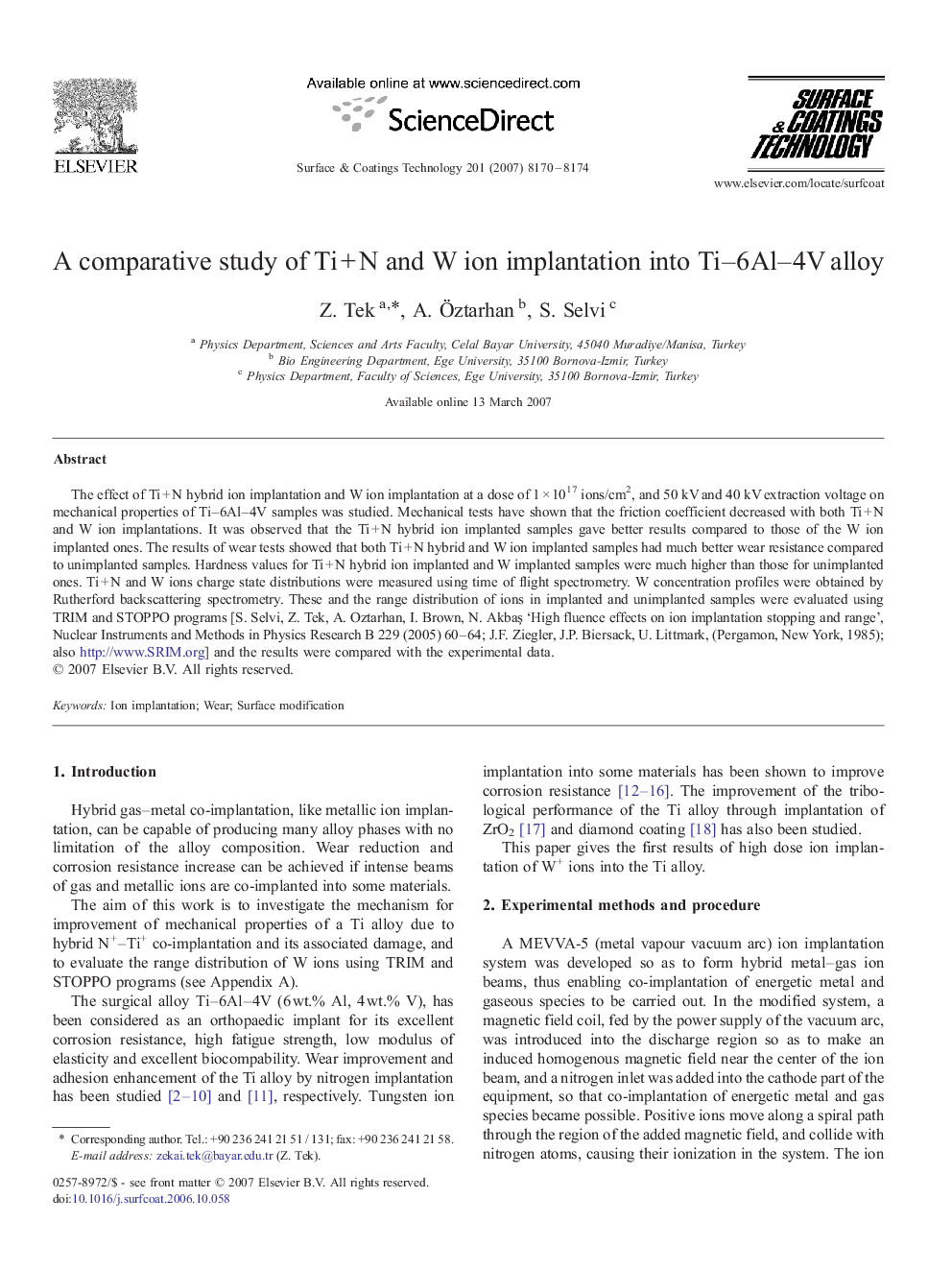| Article ID | Journal | Published Year | Pages | File Type |
|---|---|---|---|---|
| 1662982 | Surface and Coatings Technology | 2007 | 5 Pages |
The effect of Ti + N hybrid ion implantation and W ion implantation at a dose of 1 × 1017 ions/cm2, and 50 kV and 40 kV extraction voltage on mechanical properties of Ti–6Al–4V samples was studied. Mechanical tests have shown that the friction coefficient decreased with both Ti + N and W ion implantations. It was observed that the Ti + N hybrid ion implanted samples gave better results compared to those of the W ion implanted ones. The results of wear tests showed that both Ti + N hybrid and W ion implanted samples had much better wear resistance compared to unimplanted samples. Hardness values for Ti + N hybrid ion implanted and W implanted samples were much higher than those for unimplanted ones. Ti + N and W ions charge state distributions were measured using time of flight spectrometry. W concentration profiles were obtained by Rutherford backscattering spectrometry. These and the range distribution of ions in implanted and unimplanted samples were evaluated using TRIM and STOPPO programs [S. Selvi, Z. Tek, A. Oztarhan, I. Brown, N. Akbaş ‘High fluence effects on ion implantation stopping and range’, Nuclear Instruments and Methods in Physics Research B 229 (2005) 60–64; J.F. Ziegler, J.P. Biersack, U. Littmark, (Pergamon, New York, 1985); also http://www.SRIM.org] and the results were compared with the experimental data.
